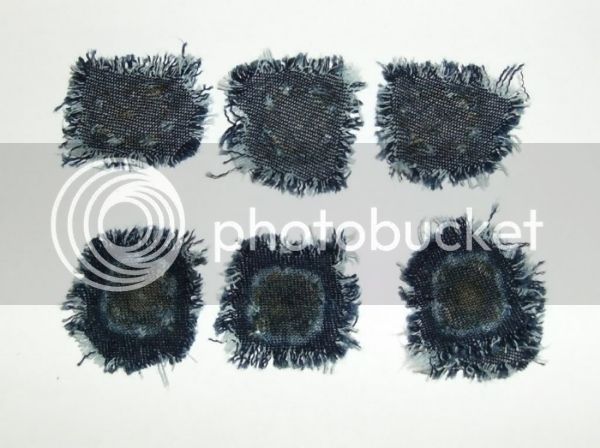Just came back from shooting my new Lyman Plains pistol. I have not been able to achieve any consistent accuracy at 25 yds yet, using any powder load, ranging from 20 to 40 grains of Pyrodex P. Here are the vital stats:
Caliber: .54
Ball: .535
Patch: Denim, thickness .011 (compressed reading)
Patch Lube: 1:7 Ballistol:Water, dried
Overpowder wad: wasp nesting, then for the last six shots I tried folded patch material.
The patch/ball combo needed a short starter to get past the muzzle but would load without much difficulty after that. No pounding the ball into a misshapen lump was involved.
Here are the patches from the last six times shooting:

It didn't seem to make a difference what the load or the overpowder material was in determining what the patch ended up looking like. Sometimes it would be relatively intact but still cut in one corner, at other times the center would be completely blown out.
From other posts I have read it seems like sharp rifling and/or a sharp crown are to blame. What do you think, and what would you suggest as a remedy? Many thanks.
Caliber: .54
Ball: .535
Patch: Denim, thickness .011 (compressed reading)
Patch Lube: 1:7 Ballistol:Water, dried
Overpowder wad: wasp nesting, then for the last six shots I tried folded patch material.
The patch/ball combo needed a short starter to get past the muzzle but would load without much difficulty after that. No pounding the ball into a misshapen lump was involved.
Here are the patches from the last six times shooting:

It didn't seem to make a difference what the load or the overpowder material was in determining what the patch ended up looking like. Sometimes it would be relatively intact but still cut in one corner, at other times the center would be completely blown out.
From other posts I have read it seems like sharp rifling and/or a sharp crown are to blame. What do you think, and what would you suggest as a remedy? Many thanks.





